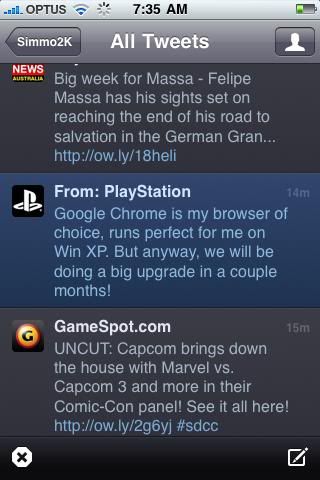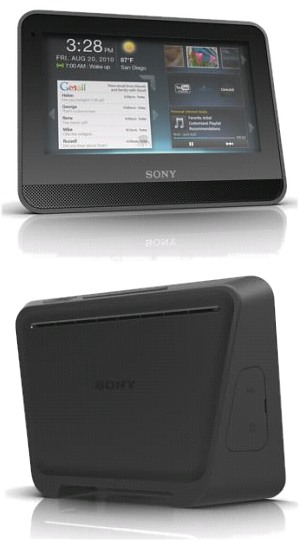The coming together of the broadcast industry (TV programmes), the entertainment industry (movies, games) and the Internet (World Wide Web, email, chatting and e-commerce, or t-commerce as it is referred to in the context of television) creates an enormous momentum or the development of new content and new services.
All analyses are intended to contribute to a better description and understanding of the four main terms of this study: webTV, enhanced TV, interactive TV and personal TV
Digital television is a technology of encoding audio, video and data into digital format, the transmission of the signal and the receiving and decoding of that digital signal. Digital television ensures better image and sound quality and is an enabler for new services.
WebTV is a service by which Internet can be disclosed and used on a television set.
Enhanced television refers to the enrichment of programs with additional information. Examples are for instance statistics during a match at Wimbledon or the choice of a different camera angle. This extra information is shown by for instance making the main broadcast into a so called 'quarter screen'.
Interactive television refers to the enrichment of programs with additional information thereby making use of direct feedback from the consumer. Examples are for instance ordering a cookbook during a cookery show by pressing a code on your remote control, or voting during a game show by using your remote control.
Personal television refers to the concept of watching television programmes at any given moment as chosen by the individual, which is also referred to as ‘time shifting’. Examples are watching the 8 o’clock news at 8:34 or pausing live broadcasting and continue watching for instance a few minutes later where you left off. In a broader sense personal TV refers to the concept of television viewing behaviour tailored to a person based on preferences and earlier viewing behaviour.
The importance of adopting industry standards is recognised by the set-top box community. It enables set-top developers to port applications to all of the currently available different operating systems and leads therefore to lower overall set-top deployment costs.
The
DVB initiative is named Multimedia Home Platform, or MHP (
www.mhp.org). This standard is a set of Java-based application programming interfaces being tandardised for the digital broadcast of multimedia and applications in
Europe, Asia, and other regions.
Implemented in set-top boxes it enables the reception and presentation of applications in a
vendor and broadcaster neutral framework. The MHP API consists actually of a series of APIs dealing with more procedural functions to access low-level procedural functions, or more declarative functions to interpret application functions.
A similar solution as
MHP is reached by a subcommittee of the
ATSC, named T3/S17. They developed a reference architecture called the
DTV Application Software Environment (DASE), which support broadcast environments and a variety of open Web standards. The reference architecture is comprised of a virtual machine for set-top applications and a presentation engine. The Personal Java Virtual Machine was selected as the application virtual machine for all DASE compliant set-top boxes. For the presentation engine a Broadcast HTML (BHTML) is proposed. According to the DASE specification a web browser is not required to view BHTML content, reducing the memory and processing requirements of the set-top box.
The focus of the ATVEF is on leveraging existing Internet standards (HTML 4.0, CSS1, ECMAscript, DOM) to deliver an enhanced TV experience, in order to make content production for digital television less expensive and more convenient for consumers. The alliance - comprising of among others
Microsoft, Intel, Disney, NBC, Cablelabs, DirecTV,
Sony and Warner Bros – defined protocols for HTML-based television, which allow content creators to deliver enhanced programming over all forms of transport (analogue, digital, cable, MMDS, and satellite) to any intelligent receivers. The ATVEF group has created a specification, called Advanced Television Enhancement Forum pecifications for Interactive Television 1.1. It describes guidelines for developing content and distributing to a variety of access devices, among them digital set-top boxes.
Home Media Servers
The set-top box and its brother-in-arms the PDR can be seen as paving the way for a central hub, portal or gateway for all communications in the home environment:
“Technology is erasing the boundaries of televisions, telephones and computers. The
cable box on your TV will not only let you order all the PPV movies you want, but it
will be a virtual communications centre.” (C. Michael Armstrong, chairman of AT&T, at
the 1999 Internet World Conference, quoted from Swann, 2000, p. 103)
And
“You’ll see set-tops with hard drives for storing operating software, entertainment, and
games. It will be the wireless link for telephone handsets and devices for home
shopping and transmission of video to a second TV set. If a person doesn’t have a
PC, the most powerful device now in the home is the set-top.” (Gary Osborne, head of
corporate development at Pace, quoted from Dunn, 2001).
The concept of interconnecting electronic devices within a residential home seems the next logical step. It allows consumers to share files between family members, share the use of expensive peripheral devices such as colour printers and DVD players, and play multi-user games.
Within the context of the TV Anytime Framework it is also recognised that consumers can have a PDR as a personal 'local' storage device in their living room but can add removable
media as external storage to the home hub (see Figure 22).34 They can also carry a portable device with storage media, or they can access personal storage at the head-end of a service provider. Therefore, storage is not necessarily inside the home, but can reside in a service provider's facility.35 Since stored data can include a wide variety of content, such as video, audio, web pages, and consumer preference profiles and content access history, data storage can be accomplished through multiple mechanisms. Therefore inside the home, three kinds of functions are assumed:
1. Intelligent hub or gateway, with a receiving capability for digital content
2. Data storage
3. Display screen.
These functions can be supplied by individual devices, like STBs and PDRs, or by a console like an ‘integrated TV’, to create a single system. Figure 22 provides an overview of how 'persistent' storage can exist on a variety of devices and the relationship between those devices in a simple network. Each device can be implemented by different components:
PDR----->PC, STB,
Games Console, DVR, a part of the TV
Home Hub------->PC, Server, STB, a part of the TV
Screen------->TV, PC, Projector, Hand-held, Console screen
Headend (remote storage)------->Server, Digital Cable Server, DSL Server
Multiple Networks------->
Broadcast systems, DTT, Digital Cable, Digital Satellite, Analogue transmission
Portable playback/record device------>'MP3 player', Laptop, Camcorder
Removable Media------->DVD, CD ROM, Jazz/Zip, External HD, Smart Card, Flash ROM, RAM
Online Mobile Device-------->Mobile phones, WAP, UMTS, GPRS, Bluetooth








